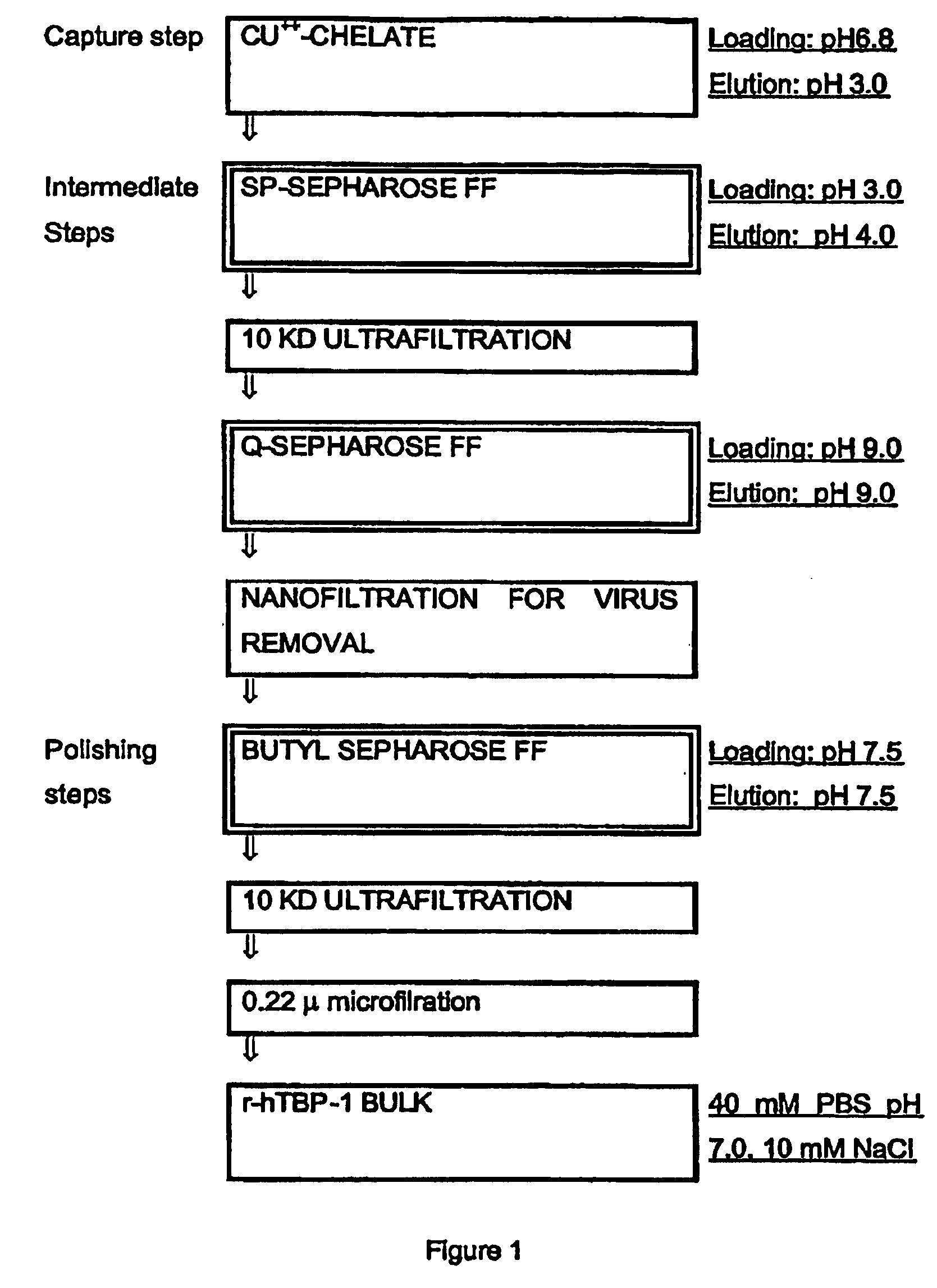Process for the purification of tnf-binding proteins using imac
a technology of imac and tnf, applied in the field of polypeptide purification, can solve the problems of insufficient specificity, impairing the specificity of the purification step, and the adsorption efficiency, although generally satisfactory for purification purposes, may not be optimal
- Summary
- Abstract
- Description
- Claims
- Application Information
AI Technical Summary
Benefits of technology
Problems solved by technology
Method used
Image
Examples
examples
[0090]
MaterialsEquipmentChromatographic column XK26 / 20Pharmacia(2.6 × 20 cm)Chromatographic column XK50 / 20 (5 × 20 cm)PharmaciaPeristaltic pump Miniplus 2GilsonPeristaltic pump P-1PharmaciaChart recorder 2210PharmaciaUV detector Uvicord 2158PharmaciaOn line pH-conductivity monitorBiosepraLow Pressure chromatographic system FPLCPharmaciaHPLC analytical systemMerckFluorimetric detector mod. 9070VarianRefrigerated box MCF 1500AngelantoniU.V Spectrophotometer UV1204ShimadzuUltrafiltration system mod. MinitanMilliporeMinitan plates 4 / KMilliporeStirred cell mod. 8400AmiconStirred cell mod. 8050AmiconUltrafiltration membrane type YM10AmiconUltrafiltration membrane type YM10AmiconResins and columnsSP Sepharose FFPharmaciaQ Sepharose FFPharmaciaButyl Sepharose FFPharmaciaChelating Sepharose FFPharmaciaSP Sepharose Big BeadsPharmaciaPhenyl Sepharose 6 FF (high sub)PharmaciaCM Sepharose FFPharmaciaDEAE Sepharose FFPharmaciaDEAE-HyperDBiosepraSupelcosil LC-308 0.46 × 5SupelcoAquapore RP-300 Bro...
PUM
| Property | Measurement | Unit |
|---|---|---|
| Electrical conductance | aaaaa | aaaaa |
| Temperature | aaaaa | aaaaa |
| Volume | aaaaa | aaaaa |
Abstract
Description
Claims
Application Information
 Login to View More
Login to View More - R&D
- Intellectual Property
- Life Sciences
- Materials
- Tech Scout
- Unparalleled Data Quality
- Higher Quality Content
- 60% Fewer Hallucinations
Browse by: Latest US Patents, China's latest patents, Technical Efficacy Thesaurus, Application Domain, Technology Topic, Popular Technical Reports.
© 2025 PatSnap. All rights reserved.Legal|Privacy policy|Modern Slavery Act Transparency Statement|Sitemap|About US| Contact US: help@patsnap.com



